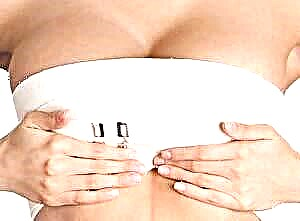
Fluconazole antifungal agents are often used in the treatment of candidiasis or infections caused by other fungi. One of them is the French medicine Diflucan, which is produced by the Pfizer company. One of its dosage forms - sweet suspension - is especially in demand in the treatment of children. Can this drug be given at an early age and how is it properly dosed?

Release form
Suspension "Diflucan" is produced in plastic bottles with white powder inside. After adding water, it becomes a white thick syrup with an orange scent. One bottle is placed in a box along with a measuring spoon that allows you to measure 5 ml of the medication, as well as give the child 2.5 or 1.25 ml (for this, there are additional divisions inside the spoon).

In addition to the suspension, Diflucan is also produced in capsulespresented in three different dosages, as well as in injectable form - in the form of a solution that is injected into a vein.
Composition
The main active ingredient of Diflucan is fluconazole. Such active ingredient in 5 ml of suspension may be 50 mg or 200 mg, respectively, one milliliter of the drug may contain fluconazole in a dose of 10 mg or 40 mg.
Additionally, the preparation includes xanthan gum, sodium citrate dihydrate, sodium benzoate and titanium dioxide. There are both silicon dioxide and citric acid in the composition of the drug (both compounds are anhydrous). The sweet taste of the liquid is due to sucrose, and the pleasant aroma is from an orange flavor made from water, maltodextrin and orange essential oil.


Operating principle
Diflucan is a drug of a group of antifungal drugs, since fluconazole in its composition is capable of inhibiting the synthesis of sterols in fungal cells. The medication affects candida, cryptococci, Microsporum, Trichophyton and others.
The suspension taken orally is rapidly absorbed, and its bioavailability is estimated at 90% and higher. In this case, food does not in any way affect the absorption and action of the medication. After 30-90 minutes in the blood plasma, the concentration of the active substance of Diflucan becomes maximum, and the half-life of the drug occurs approximately 30 hours after administration. Most of the medication (more than 80%) is excreted in the urine.


Indications
Most often, Diflucan in suspension is prescribed to children with candidiasis of the mucous membranes, for example, from stomatitis. In addition, the drug can be used for the defeat of the respiratory tract, esophagus, mucous membrane of the eyes, urinary tract, pharynx, inner lining of the heart, peritoneum and other organs.
The remedy is effective for disseminated candidiasis and candidemia, as well as for genital candidiasis (vaginal infection in girls and balanitis in boys). Diflucan is also used for prophylactic purposes to prevent recurrence of candidiasis or prevent the development of fungal infection with reduced immunity, for example, during radiation therapy or after organ transplantation.
A rarer reason to prescribe Diflucan to a child is infection with cryptococci, including lesions of such fungi of the lungs, skin and meninges. Also, the medication can be used for skin mycoses, for example, with pityriasis versicolor, foot mycoses or onychomycosis. Such a medicine is also prescribed for systemic mycoses caused by coccidioides, histoplasmas, paracoccidioides or sporotrichums.
From what age is it allowed to take?
There are no age restrictions for the use of Diflucan in childhood, however, this medicine can be given to newborns and infants only under the supervision of a pediatrician. It is unacceptable to give such a medication to small children without consulting a doctor.


Contraindications
Treatment with Diflucan is not prescribed in case of hypersensitivity of a small patient to any of the components in such a suspension. Special attention from the doctor requires the use of this medication in children with impaired liver function, allergic rash and the risk of arrhythmia (with organic heart pathologies and electrolyte imbalance).

Side effects
- The use of Diflucan can lead to negative reactions of the digestive tract, among which the most common are abdominal pain, flatulence and diarrhea. Also, the medication can provoke nausea and other symptoms of dyspepsia.
- The medicine sometimes affects the patient's nervous system, causing headaches, changes in taste, dizziness, and even seizures.
- Diflucan can be toxic to the liver, impairing liver function and causing jaundice or hepatitis.
- Taking the medication can cause skin rashes and other allergic reactions, including anaphylactic reactions.
- Some children may have a negative effect of the drug on blood formation. In such cases, a blood test shows leukopenia (the number of white cells decreases mainly due to neutrophils) and thrombocytopenia.
- The negative effect of fluconazole on the heart can be manifested by arrhythmias and changes in the ECG.

Instructions for use and dosage
Opening a bottle of powder, add pure water inside (it is recommended to boil it and then cool it) in volume 24 milliliters... The bottle is then closed and shaken vigorously to ensure good mixing of the drug with water and uniformity of the drug. Before each medication intake, the suspension should also be shaken thoroughly.


The suspension is given to the child 1 once a day... The dosage of the drug is determined based on the severity of the infection and its nature. Usually, when the mucous membranes are damaged by candida, the drug is prescribed in a dose 3 mg active connection on 1 kilogram of the baby's body weight per day.

For example, if a child weighs 13.5 kg at 2 years old, then he should be given 40 mg of fluconazole per day, which corresponds to 4 ml of a suspension containing this substance at a dose of 50 mg / 5 ml or 1 ml of a drug with a higher dose (200 mg / 5 ml ). In order for the therapeutic effect to develop faster, on the first day, children are often given a double dose, which is called a shock dose.

If a small patient is diagnosed with generalized candidiasis or the child has contracted a cryptococcal infection, then the daily amount of fluconazole in milligrams per kilogram of weight will be from 6 before 12... The doctor determines the dose more precisely, taking into account the severity of the disease.
With a prophylactic purpose with reduced immunity and a high risk of fungal infection, the daily dose of Diflucan for a child is from 3 before 12 mg per 1 kilogram of weight. Individual calculation of the dosage is required by children with kidney problems and babies in the first month of life, since the elimination of fluconazole in newborns is slower.

Overdose
Too large a dose of the suspension can adversely affect the child's nervous system, so an excessive amount of the drug drunk should be a reason for immediate medical attention.

Interaction with other drugs
- The use of the drug together with cyclosporine, theophylline, rifabutin, phenytoin, zidovudine or sulfonylurea preparations requires the supervision of medical personnel.
- The drug should not be combined with medicines such as terfenadine, cisapride, or tacrolimus, as these combinations increase the risk of side effects on the heart or kidney function.
- With the appointment of Diflucan, an increase in the therapeutic effect of benzodiazepine drugs is noted.
- The medicine can be combined with azithromycin, hydrochlorothiazide, cimetidine, antacids.
- If you give Diflucan with anticoagulants, it will increase the risk of bleeding.
- Rifampicin affects the concentration of fluconazole in the blood and its excretion; therefore, higher doses of Diflucan are recommended for treatment with this antibiotic.

Terms of sale
To buy Diflucan at a pharmacy, you first need to see a doctor for a prescription for such a medication. On average, one bottle of a suspension with a concentration of fluconazole in 5 ml of a liquid preparation at a dose of 50 mg costs 500-550 rubles.

Storage conditions and shelf life
Both the sealed powder and the already prepared suspension can be kept at home at room temperature. The manufacturer warns that the medicine should not be frozen or heated to a temperature of +30 degrees and above. To store the medication, you should choose a place hidden from a small child.
An unopened bottle can be stored for the entire shelf life of 3 years. After mixing with water, the drug should be stored for no longer than two weeks.


Reviews
In most reviews of mothers who gave Diflucan to children from thrush in the mouth, the drug is highly effective. Parents emphasize that taking the suspension accelerated recovery, and the plaque on the tongue, unpleasant odor, bleeding gums and other manifestations of candidiasis soon disappeared in children. The liquid form of the drug is praised for its ease of dispensing and its pleasant taste. The disadvantages of the mother's medication include the high price and small volume of the bottle.

Analogs
Other medicines containing fluconazole can be substituted for Diflucan, for example, "Flucostat", "Mikosist", "Fluconazole Sandoz", "Mikoflucan" and others. However, they are all presented only in solid form (capsules, tablets) or injections.
Also, instead of fluconazole preparations, the doctor may prescribe agents acting on yeast with another active substance. These can be medicines including nystatin, clotrimazole, ketoconazole, natamycin, and other compounds. At the same time, the attending physician should choose an analogue, since each of these medicines has its own nuances of use.




